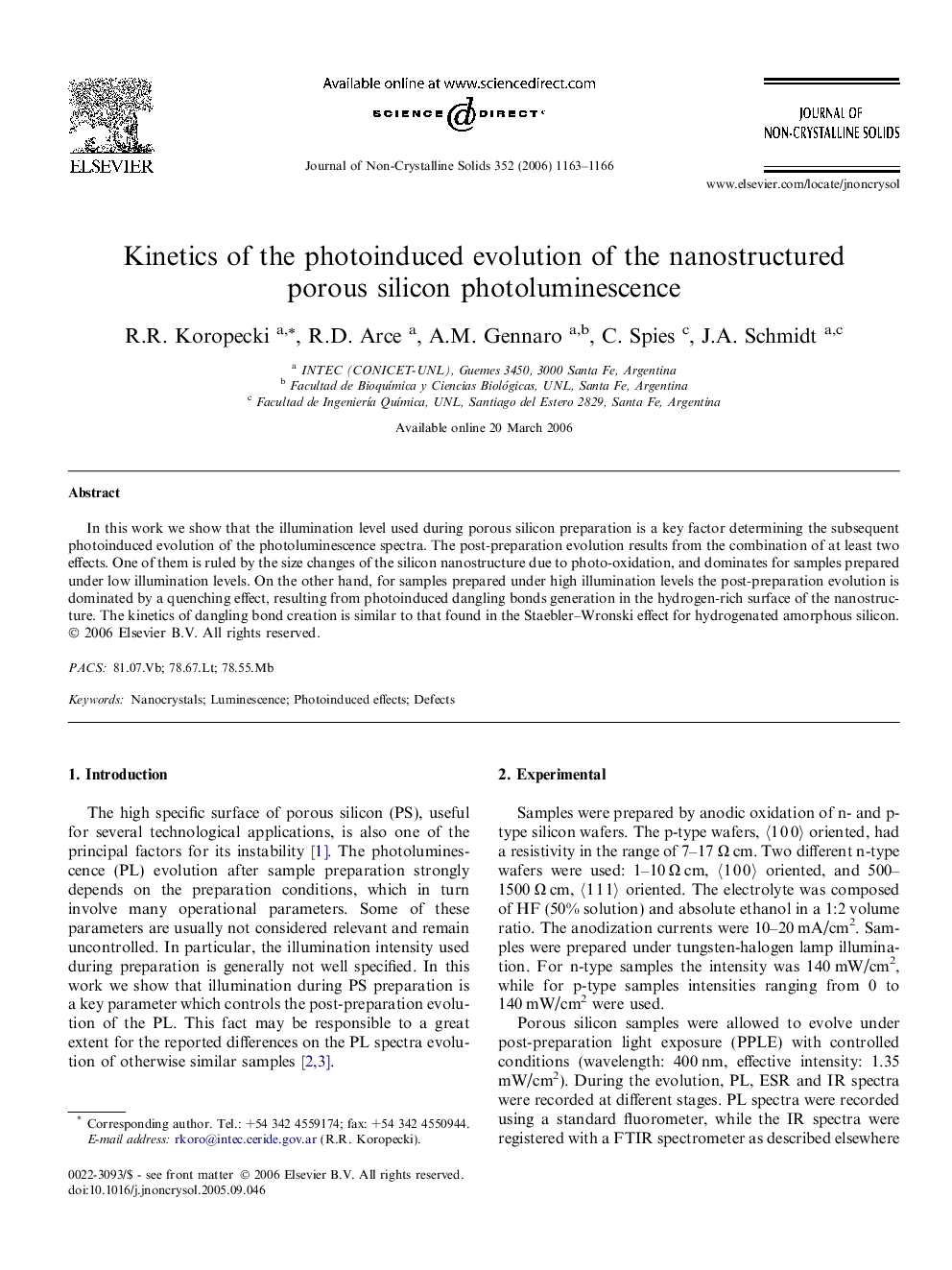| Article ID | Journal | Published Year | Pages | File Type |
|---|---|---|---|---|
| 1486367 | Journal of Non-Crystalline Solids | 2006 | 4 Pages |
In this work we show that the illumination level used during porous silicon preparation is a key factor determining the subsequent photoinduced evolution of the photoluminescence spectra. The post-preparation evolution results from the combination of at least two effects. One of them is ruled by the size changes of the silicon nanostructure due to photo-oxidation, and dominates for samples prepared under low illumination levels. On the other hand, for samples prepared under high illumination levels the post-preparation evolution is dominated by a quenching effect, resulting from photoinduced dangling bonds generation in the hydrogen-rich surface of the nanostructure. The kinetics of dangling bond creation is similar to that found in the Staebler–Wronski effect for hydrogenated amorphous silicon.
